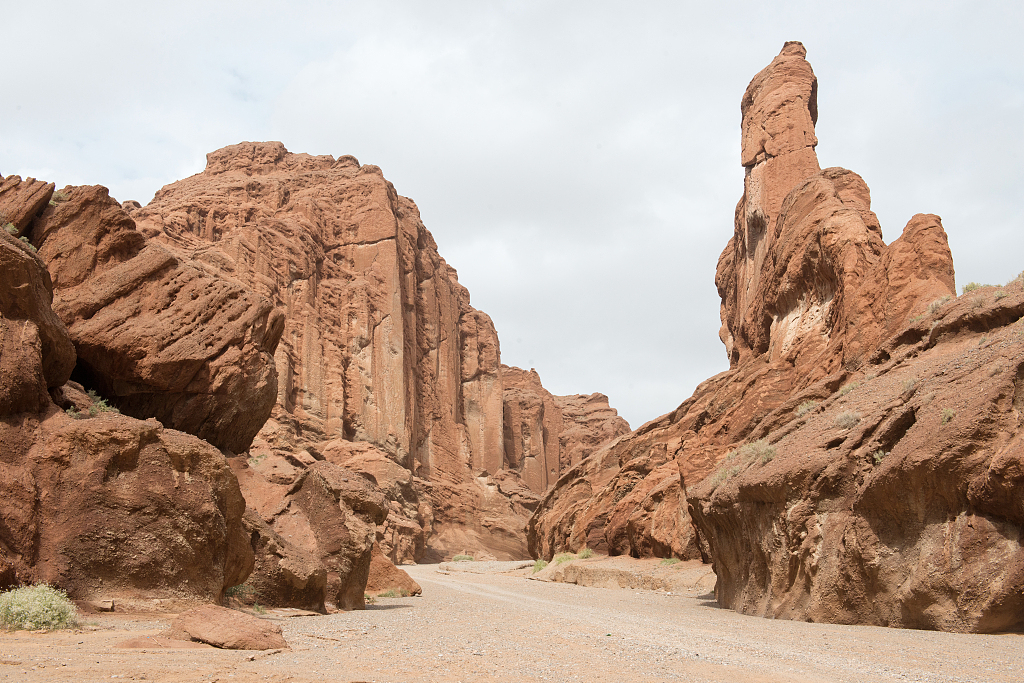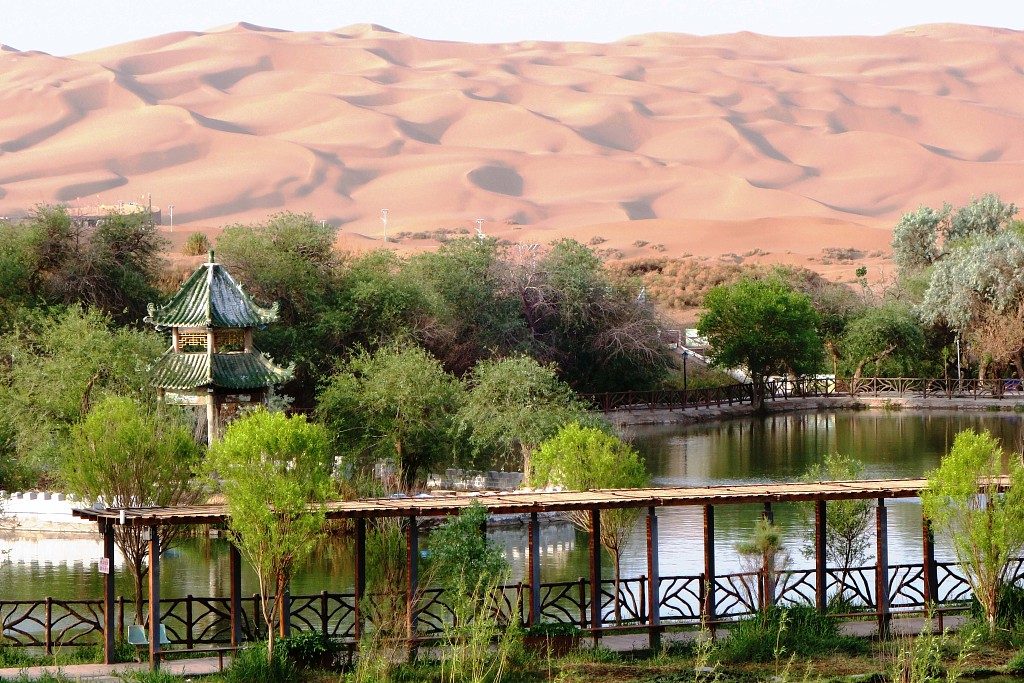

The tourism sector of northwest China's Xinjiang Uygur Autonomous Region is seeing a continuous boom as the region has emerged as a popular destination for travelers from home and abroad. Especially during the summer season, many travelers find Xinjiang more appealing due to its cool weather.
The region recorded nearly 21.4 million trips in the first quarter of 2019, yielding a tourism income of 24.441 billion yuan (3.53 billion U.S. dollars), said Shi Yunhai, an official from Xinjiang's culture and tourism department.
Urumqi, the region's capital, was listed for the first time this year as one of the top 10 domestic destinations for summer escapes, reported online travel agency Ctrip. Tianshan Grand Canyon and Baiyun International Ski Resort are the top attractions in Urumqi with temperatures ranging from 18 to 28 degrees Celsius.

Tianshan Grand Canyon in Urumqi, northwest China's Xinjiang Uygur Autonomous Region. /VCG Photo
Temperatures and climates are very diverse in different parts of the region. Every year from June to August, the highest temperature in Turpan exceeds 45 degrees Celsius with the surface temperature of sand dunes reaching 70 degrees, making it the best time for sand therapy.
According to local statistics, more than 300,000 tourists come to Turpan for sand therapy every year. With its unique resources, the city is trying to build a "Sand Therapy Town" located in Shanghu Village of Ya'er Town in Gaochang District.
The government encourages locals to develop sand therapy services, family inns, restaurants and stores, aiming to improve local tourism.

Kumtag Desert Scenic Area in Turpan, northwest China's Xinjiang Uygur Autonomous Region. /VCG Photo
The county of Taxkorgan, which borders Afghanistan, Pakistan and Tajikistan, is the only Tajik Autonomous County in China, with most of its roughly 40,000 residents being ethnic Tajiks.
Sitting on the Pamir Plateau, it is home to the famous Khunjerab Pass on the China-Pakistan border as well as the peak of Mount Qogir, the second highest peak in the world following the peak of Mount Qomolangma, also known as Mount Everest. Visitors are also lured by its snow-capped mountains, verdant grassland and Tajik festivities such as the eagle dance and polo.
The county of Taxkorgan has received over 554,000 visitors in the first half of this year, up 43.3 percent year on year. Together they have brought in tourism revenue of 576 million yuan (about 83.77 million U.S. dollars), according to local tourism authorities. It has also created more than 1,000 jobs for local residents this year and helped many escape poverty.

The county of Taxkorgan attracts many visitors for its natural landscape. /VCG Photo
The stability has benefited tourism, boosted employment opportunities as well as alleviated local poverty, said Xinjiang officials.
As tours to Xinjiang have become increasingly popular among tourists, local authorities have launched a plan to bring 100 special trains into operation for tourists from this May to October.

The Lanzhou-Xinjiang high-speed railway brings increased travel possibilities for the residents and tourists. /VCG Photo
In 2018, the number of tourists in Xinjiang Uygur Autonomous Region exceeded 150 million, up more than 40 percent year on year. Nearly 70 percent of those visitors came during the region's peak season from June to September.
(With input from agencies)
(Cover image via VCG)

Copyright © 2018 CGTN. Beijing ICP prepared NO.16065310-3
Copyright © 2018 CGTN. Beijing ICP prepared NO.16065310-3